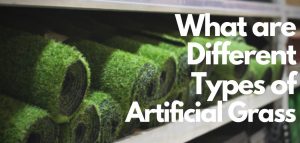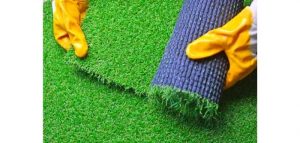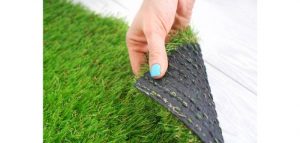Are you considering installing artificial grass in your yard? If so, you’re not alone!
A growing number of homeowners are choosing to go this route, thanks to the many benefits that artificial grass has to offer.
But with so many different types of artificial grass on the market, it can be tough to know which one is right for you.
In this blog post, we will discuss the different types of artificial grass along with their respective pros and cons, suitable usage areas and cost.
We’ll also give you some tips on how to choose the best artificial grass according to your needs.
Contents
3 Different Types of Artificial grass
There three different types of artificial grass. We’ll go through each one, including their application area, cost, and durability.
We will also discuss pros and cons of artificial grass types.
Nylon Artificial Grass
Nylon is considered to be the strongest and most common type of material that are in use for artificial grass.
Among all artificial grass types, the nylon one also has better resistance to temperature and UV light, making it a good choice for areas that get a lot of sun exposure.
Nylon fibers are also relatively soft, so they’re comfortable to walk on, it is better in terms of durability, maintenance, and being pet friendly and children safe.
Although it is more expensive than other types of artificial grass, nylon turf is a wise investment for any homeowner who wants a beautiful, low-maintenance lawn.
Among the many places where nylon type of artificial grass fits well are as follows:
- Play Areas
- Dog Runs
- Sports Fields in the Backyard
- Back and Front Yard Lawns
- Walkways and Putting Greens
- Entertainment Areas Outdoors
- Hillsides and Pool Decks
Polyethylene Artificial Grass
Polyethylene is the most common type of plastic used in the world, and it’s also the main component of artificial grass.
The material used for making this grass is usually similar to the one used for bags or bottles and its mostly made from recycled materials.
The polyethylene types of artificial turf is treated with additives that make it UV resistant. However, you would not be able to rely on it as much as you do with the nylon grass.
While polyethylene has many benefits – it’s durable, inexpensive, and easy to work with – it also has a few drawbacks.
For one thing, polyethylene is not as strong as other plastics, so it’s more likely to tear or fray over time.
Additionally, polyethylene is not very permeable, so it doesn’t allow water or air to pass through easily.
As a result, polyethylene artificial grass can become hot and humid in warm weather, making it uncomfortable to walk on barefoot. It can fade in direct sunlight and may not be as durable as nylon grass.
However, polyethylene artificial grass is still a popular choice for many homeowners because of its low cost and easy installation.
Despite the surface not being level or flat, these type of fake grass can be installed on it. Its suitable for following areas.
- Pool areas
- Outdoor Play Spaces
- Entire Home Lawns
- Old Areas
Polypropylene Artificial Grass
Polypropylene artificial grass is a type of turf made from synthetic fibers that resemble real grass.
It is often used in sports fields, playgrounds, and landscaping. Polypropylene grass is known for its durability and resistance to wear and tear.
It is also easy to clean and maintain. However, one downside of polypropylene grass is that it can be hot to the touch in direct sunlight.
This grass type is also one that attracts heat from the sun irrelevant of the UV protection it is said to have.
However, this is a lot cheaper when compared to the two other options that were discussed above. It would not be as durable as the nylon grass but is almost equal to the other variant.
You can choose to use this on both flat and uneven surfaces.
Public playing areas prefer to use this over the other options due to the price advantage it has. Other application area are listed below.
- Hot Climate Regions
- Sports Fields
- Landscaping
Conclusion
So, which type of artificial grass is right for you?
The answer depends on your budget and your needs. If you have pets or children, you may want to opt for nylon grass.
If you’re looking for a more realistic option, polyethylene grass may be the way to go.
And if you’re on a budget, polypropylene is a great option that offers the best of both worlds.
Whichever type of artificial grass you choose, we hope this comparison has assisted you in making an informed decision!



